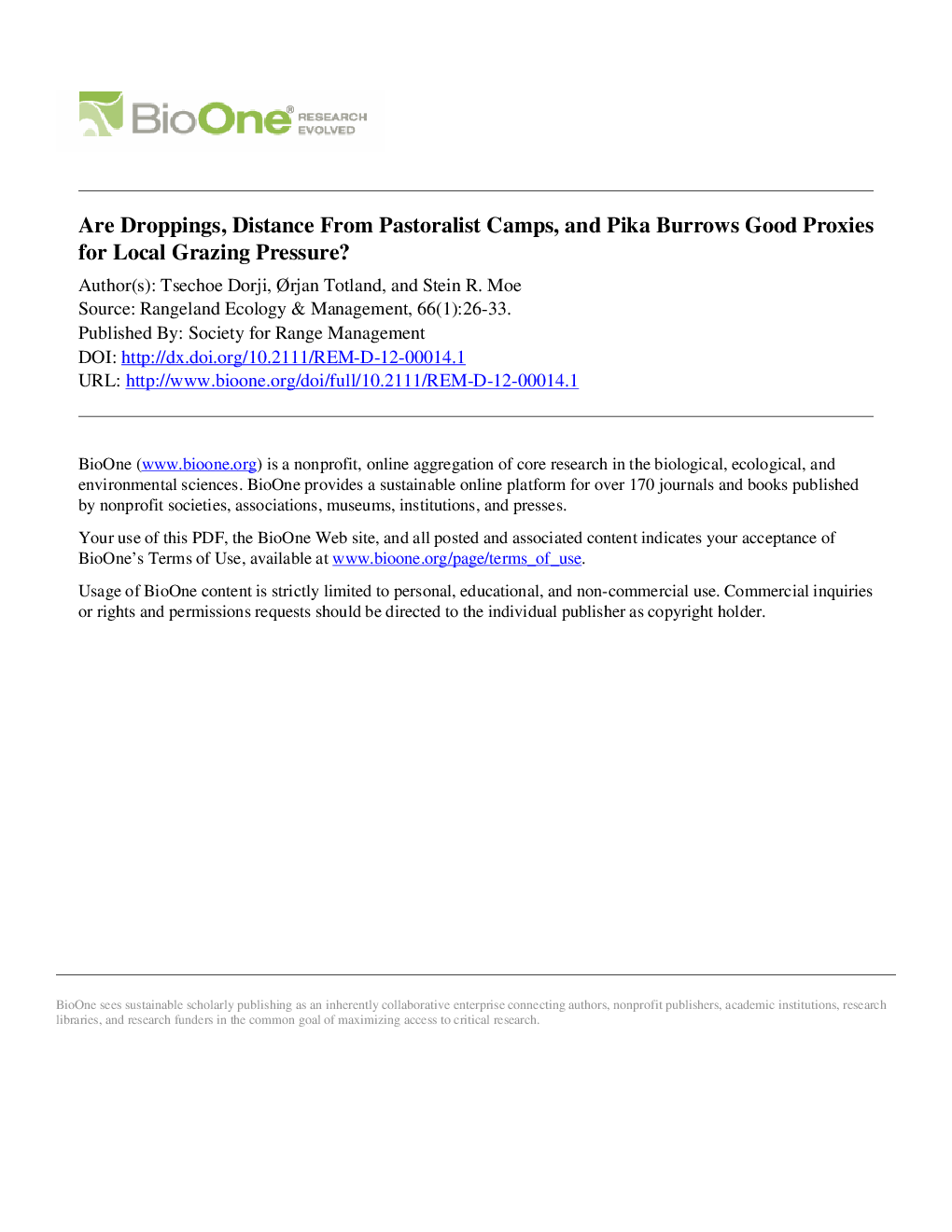| Article ID | Journal | Published Year | Pages | File Type |
|---|---|---|---|---|
| 4404174 | Rangeland Ecology & Management | 2013 | 9 Pages |
Abstract
Grazing is regarded as one of the most important factors influencing rangeland ecosystems. Many previous studies have used indirect measures (proxies) of grazing intensity, such as the distance from congregation areas and the number of herbivore excreta, to estimate effects of grazing on vegetation parameters in rangeland ecosystems. However, little is known about how such proxies reflect the true grazing intensity, and if their suitability is consistent across landscape conditions. We measured grazing intensity based on the amount of plant ramets being grazed in 75 plots positioned across a rangeland landscape in central Tibet. Several grazing intensity proxies (distance from pastoral camp sites, number of yak dung patches (old and fresh), sheep and goat dropping piles, and pika (Ochotona curzoniae) burrows (active and abandoned)) were also measured in each plot. Regression models were used to examine the suitability of these proxies in predicting our measure of real grazing intensity. None of the examined proxies satisfactorily predicted real grazing intensity in our study system. The distance from camp sites was the best proxy for grazing intensity (P<0.001), but it explained only 30% of its variation. Fresh yak dung and active pika burrows explained only 10% and 3% of the variation in grazing intensity, respectively. The suitability of using proxies for grazing intensity did not significantly differ along landscape parameters (elevation, aspect directions, and slope angle) (P>0.05), except that the number of animal excreta and pika burrows functioned better as proxies at low, compared to high, elevation (P<0.05). Our results should be of concern since many studies use proxies to estimate effects of grazing on vegetation dynamics and ecosystem properties. We recommend awareness of potential limitations and suitability of proxies, when real grazing intensity is not measured.
Related Topics
Life Sciences
Agricultural and Biological Sciences
Agricultural and Biological Sciences (General)
Authors
Tsechoe Dorji, Ãrjan Totland, Stein R. Moe,
